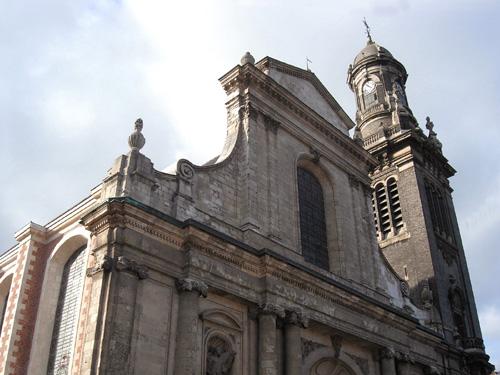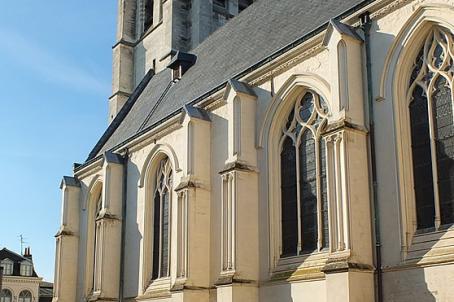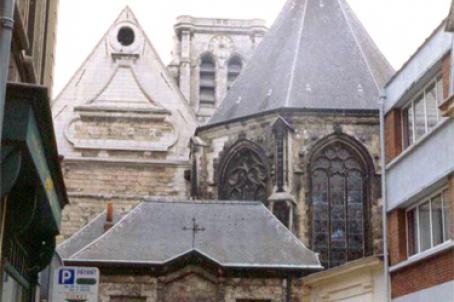Saint-André Church, Lille
The parish church of St. Andrew has existed since the 13th century but was located at the rampart of St. Andrew. Damaged by shells during the siege of 1708 by the imperial army, it was finally destroyed in 1784. The chapel of the convent of the Discalced Carmelites, Notre-Dame du Mont-Carmel, later renamed Saint-André parish church, was used.
About this building
The church, of elongated plan with three vessels, without transept, is 71m long by 23.5m wide for a vault height of 28m. It is formed by: a nave of six bays, separated from the aisles by two rows of Ecaussine stone columns, a choir of three bays, and aisles ending in an apsidiole.






